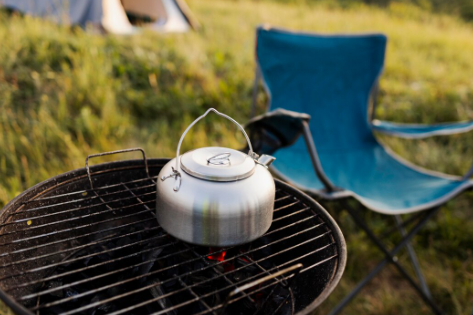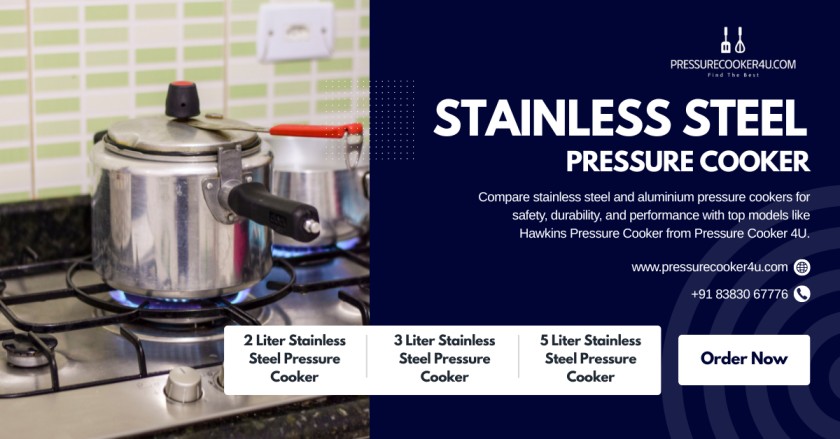When it comes to outdoor cooking, few things match the taste, convenience, and fun of grilling on a gas barbecue. But to keep your grill sizzling, you need the right gas barbecue bottle — the fuel source that powers the flames and brings your recipes to life. Choosing the right gas bottle isn’t as simple as grabbing any cylinder at the store. The right size, gas type, connection, and safety features can make all the difference between an easy barbecue experience and a frustrating one.
In this guide, we’ll break down everything you need to know about choosing the right gas barbecue bottle for your grill — including gas types, sizes, safety tips, and how to ensure compatibility. By the end, you’ll be able to make an informed choice that keeps your barbecue efficient, safe, and enjoyable.
1. Understanding the Types of Gas for Barbecues
Before picking a gas bottle, you need to know which type of gas your barbecue uses. The two most common options are propane and butane, both of which are forms of liquefied petroleum gas (LPG). Although they’re similar, they perform differently in various conditions.
Propane Gas
Propane is the most common choice for outdoor grilling. It performs well even in colder temperatures and is available in larger bottles, making it suitable for regular or heavy barbecue use.
Advantages of Propane Gas:
-
Works efficiently in all weather conditions, including winter.
-
Ideal for larger barbecues and outdoor kitchens.
-
Available in various bottle sizes for different needs.
-
Burns hotter, which means faster preheating and more consistent grilling.
Butane Gas
Butane, on the other hand, is often used for smaller, portable barbecues or indoor gas appliances. It’s more efficient in terms of energy output per volume but doesn’t perform well in cold temperatures.
Advantages of Butane Gas:
-
Lighter bottles and easier to transport.
-
Suitable for smaller barbecues or portable camping grills.
-
Slightly cheaper than propane.
-
Burns cleaner with less soot.
In short:
If you barbecue year-round or live in a colder climate, propane is the better choice. For occasional summer grilling or small portable barbecues, butane works just fine.
2. Choosing the Right Gas Bottle Size
The next factor is size. Gas bottles come in various sizes, typically measured in kilograms (kg) or pounds (lb), referring to the gas content. The best bottle size depends on how often you use your barbecue and how large it is.
Common Gas Bottle Sizes for Barbecues:
-
5 kg (small bottle):
Perfect for small portable barbecues or camping grills. Easy to carry and ideal for short trips or light use. -
9 kg (medium bottle):
A popular choice for most home barbecues. It provides a good balance between fuel capacity and portability. -
13 kg (large bottle):
Great for frequent grillers, larger barbecues, or outdoor kitchens. It lasts longer but is heavier to move. -
45 kg (extra-large bottle):
Typically used for permanent outdoor setups or commercial use. Often installed with a fixed connection to the grill.
When choosing, think about:
-
Usage frequency: How often do you grill?
-
Duration: How long does each barbecue session last?
-
Portability: Will you move your grill or keep it in one place?
Tip:
If you barbecue every weekend, a 9 kg or 13 kg propane bottle is ideal. For occasional family picnics, a small 5 kg butane bottle may be more practical.
3. Check Your Grill’s Gas Type Compatibility
Every gas barbecue is designed to work with a specific gas type — propane or butane. Before buying a bottle, check your grill’s manufacturer label or user manual to confirm which gas it’s compatible with.
-
Most outdoor gas barbecues use propane.
-
Portable or tabletop barbecues often use butane.
If you’re uncertain, look at the gas regulator attached to your grill:
-
Propane regulators are usually red and have a POL (Prest-O-Lite) connection.
-
Butane regulators are typically blue and use a clip-on or screw-on fitting.
Using the wrong gas type can cause performance issues, unsafe pressure levels, or poor flame control. Always match your barbecue’s gas requirement with the right bottle and regulator.
4. Understanding Gas Regulators and Connections
The regulator is a crucial component that controls the flow and pressure of gas from the bottle to your barbecue. Different bottles and gases use different regulators, so compatibility is essential.
Common Regulator Types:
-
Propane Regulator: Uses a POL fitting (screw-type). Designed for higher pressure.
-
Butane Regulator: Uses a clip-on fitting for easy connection.
-
Camping Regulators: Often smaller and lightweight, designed for portable setups.
Before connecting a new gas bottle, always:
-
Check the seal and hose for cracks or wear.
-
Make sure the regulator fits snugly and locks securely.
-
Test for leaks with soapy water, never with a flame.
Replacing an old or damaged regulator is inexpensive but critical for safety and performance.
5. Refillable vs. Disposable Gas Bottles
Gas bottles come in two main categories — refillable and disposable. Each has pros and cons depending on your needs.
Refillable Bottles
These are the standard bottles most households use for barbecues. You can exchange them or get them refilled at gas stations or dealers.
Pros:
-
More economical in the long run.
-
Environmentally friendly (less waste).
-
Available in various sizes.
Cons:
-
Heavier and bulkier.
-
Requires proper storage.
Disposable Bottles
Smaller canisters often used for camping stoves or compact grills.
Pros:
-
Lightweight and convenient.
-
Easy to replace.
Cons:
-
More expensive per use.
-
Not eco-friendly.
-
Shorter lifespan.
If you barbecue regularly, go for a refillable propane bottle. If you only grill occasionally or travel a lot, disposable butane canisters might be more practical.
6. Safety Tips When Handling Gas Barbecue Bottles
Gas bottles are designed with safety in mind, but proper handling is still essential. Follow these safety tips to ensure worry-free barbecuing.
Storage Safety
-
Store bottles upright in a well-ventilated area.
-
Keep away from direct sunlight, heat sources, and open flames.
-
Do not store gas bottles indoors or in enclosed spaces like sheds or garages.
-
Use bottle caps or plugs when not connected to your grill.
Usage Safety
-
Always turn off the gas at the bottle after cooking.
-
Check for leaks regularly with soapy water.
-
Do not modify or tamper with regulators or valves.
-
Keep the hose away from hot grill surfaces.
Transport Safety
-
Transport bottles upright and secure in your vehicle.
-
Do not leave gas bottles in a hot car for long periods.
-
Always close the valve before moving the bottle.
A well-maintained gas bottle and regulator system will keep your barbecue safe and efficient for years.
7. How Long Does a Gas Bottle Last?
The lifespan of a gas barbecue bottle depends on the bottle size, grill type, and cooking habits.
As a rough guide:
-
A 5 kg bottle lasts around 8–10 hours of cooking.
-
A 9 kg bottle lasts 15–20 hours.
-
A 13 kg bottle can provide up to 30 hours or more of grilling.
If you grill often, investing in a larger bottle means fewer refills and uninterrupted barbecues. However, smaller bottles are easier to handle and replace.
8. Environmental Considerations
Modern LPG bottles are designed to be reusable, minimizing waste and emissions. However, you can take a few extra steps to reduce your environmental impact:
-
Choose refillable bottles instead of disposable ones.
-
Recycle old or damaged cylinders at authorized collection points.
-
Maintain your grill for better fuel efficiency — clean burners mean cleaner burns.
-
Turn off the gas properly after use to prevent leaks and waste.
Using propane or butane responsibly makes your barbecues both safe and eco-friendly.
9. When to Replace or Refill Your Gas Bottle
Knowing when to refill or replace your gas barbecue bottle helps avoid the frustration of running out of fuel mid-grill.
Signs It’s Time to Refill or Replace:
-
Flame starts to weaken or sputter.
-
The bottle feels lighter when lifted.
-
Frost appears near the bottom (for propane bottles nearing empty).
-
Gas smell or regulator leakage (replace immediately if damaged).
To estimate usage, note how long your bottle lasts and plan refills accordingly. Many users keep a backup bottle to ensure continuous grilling, especially during gatherings or long weekends.
10. Choosing the Best Brand or Supplier
Not all gas bottles are created equal. Choose a reputable brand or supplier that provides certified bottles and ensures safety compliance.
Look for:
-
Bottles that meet local safety standards or certifications.
-
Clear labeling of gas type (propane or butane).
-
Reliable exchange or refill programs.
-
Customer support for regulator compatibility or maintenance questions.
Some well-known LPG brands offer bottle exchange services where you simply swap your empty bottle for a full one — saving time and hassle.
11. Final Tips for Buying the Right Gas Barbecue Bottle
Here’s a quick checklist before making your purchase:
✅ Check your grill’s gas type (propane or butane).
✅ Choose the right bottle size based on usage frequency.
✅ Make sure the regulator and hose are compatible.
✅ Decide between refillable or disposable bottles.
✅ Always prioritize safety and proper storage.
✅ Consider having a spare bottle for backup.
A well-matched gas bottle ensures smooth grilling, consistent heat, and safe operation every time you fire up your barbecue.
Conclusion
Choosing the right gas barbecue bottle for your grill might seem simple, but it plays a huge role in your cooking performance, safety, and convenience. Whether you prefer propane for all-weather reliability or butane for portability, the key is matching the gas type and bottle size to your barbecue’s needs.
By understanding your grill’s compatibility, regulator type, and usage habits, you’ll enjoy consistent heat, better fuel efficiency, and worry-free outdoor cooking.
A properly chosen gas bottle turns your grill into a dependable cooking companion — ready for everything from quick weekday dinners to festive backyard parties.
So next time you fire up your barbecue, you can focus on the fun part — delicious food, good company, and the joy of grilling outdoors.

